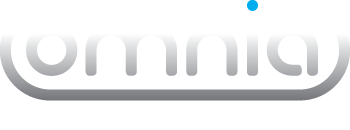
What Is Equipment Depreciation?
Depreciation is an important factor to consider when purchasing new or used machinery. It is a method of allocating purchase, installation, and maintenance costs over the equipment’s expected useful life. The financial value of an asset declines over time due to usage, wear and tear or obsolescence. This decrease is measured and named depreciation. Companies use this to account to help plan for the replacement of machinery in the future. The idea is that the benefits of the equipment will be utilised during its lifespan. The useful life of a piece of machinery is the amount of time that it can be used for the intended purpose. For example, a computer has a briefer useful life than an office chair because technology changes so quickly.
According to the IRS, equipment deprecates if it meets the following criteria:
- You own the equipment and use it in your business or produce an income with it.
- You can determine the equipment’s useful life.
- You expect the equipment to last over a year.
Factors that Impact Equipment Depreciation
Time is a huge factor that impacts depreciation; however, the physical and functional condition will also affect how quickly your machinery depreciates. But the three main determinations of depreciation are the cost of the asset, the estimated salvage value of the asset, the useful life of the asset, and if the asset is obsolescence.
Calculating Depreciation
The depreciation rate is the amount of the equipment’s cost that will be deducted each year. The rate is usually a percentage and is calculated based on the useful life of the machinery. So, if you have a dozer with a useful life of five years, then the depreciation rate would be 20%. There are a couple of different approaches to calculating equipment depreciation, but most people opt for straight-line depreciation because as the name suggests it is straightforward. The formula for calculating equipment deprecation includes initial value, useful life, and salvage value. The formula for depreciation is: asset cost – salvage value (this is the amount you can sell the item for once it’s past its useful life). Other options include the declining balance method which allocates a larger fraction of the cost in the earlier years of the machinery’s life and a smaller portion later. The calculation for this one is: (2 x straight-line depreciation rate) x book value at the beginning of the year. Then there are units of production depreciation which allocates the cost of the equipment based on how much it is used. The formula for this one is: (asset cost – salvage cost)/units produced in the useful life.
To conclude depreciation is required primarily for tax and accounting purposes to know the asset’s real value; the method chosen varies depending on its needs and purpose. If a company doesn’t depreciate, then financial reports won’t reflect the asset’s true value. The choice of depreciation method used can depend on a number of factors, including the purpose of the financial statements, tax considerations, and management preference.
Omnia Machinery are industry expert in used construction equipment and a trusted machinery trader. We stock a wide variety of quality used construction equipment to suit many different jobs such as cranes, road equipment, quarry, earthmoving, piling, drilling, and underground mining. We provide our customers with all information and pictures with their quotation before any sale is agreed upon. From inspections to shipping, we are here to support you through every step of the transaction and keep you informed throughout the whole process enabling you to purchase in confidence. Contact us today with your machinery requirements.
